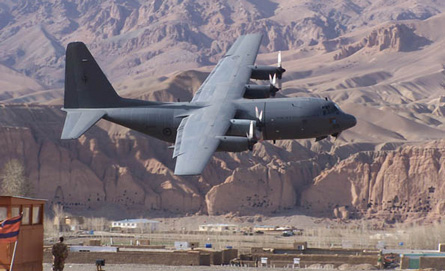Delays to the upgrade of the Royal New Zealand Air Force's Lockheed Martin C-130s has led one of the local contractors, Safe Air, to announce that it will be cutting jobs.
Consultation has begun "on reducing the workforce of about 351 by around 100 positions as a result of over 18 months of delays on delivery of the RNZAF C-130 aircraft for major upgrade work", says Safe Air. The New Zealand maintenance, repair and overhaul firm is a subsidiary of Air New Zealand.
The company says it has a subcontract from Canada's L-3 Spar Aerospace to do the upgrade work, and that the first aircraft had been due to arrive in August 2008. However, Spar closed last year and L-3 Communications MAS is now the lead contractor for the upgrade, says New Zealand defence ministry deputy secretary for acquisitions Des Ashton.
The work that Safe Air has been contracted to do involves upgrading the aircraft's "wings and other structures, avionics system, new 'glass' flightdeck, navigation and communications suites and night vision systems", he says. This also includes replacing the aircraft's centre wing.
 |
|---|
© Royal New Zealand Air Force |
New Zealand's C-130Hs have been used in Afghanistan |
Earlier delays to the programme were due to "availability of fittings and parts manufacture" for the structural work, but the more recent problems are to do with software integration, Ashton says.
Honeywell has been subcontracted "to modernise the avionics and autopilot but it is taking some time to get the system fully functioning", he adds.
Five C-130s are to be upgraded, and the first aircraft is now due to be delivered to Safe Air later this year, says Ashton, who declines to be more specific.
The RNZAF's C-130Hs were delivered between 1964 and 1968, as recorded in Flightglobal's MiliCAS database. The Hercules fleet plays an important role because the service's only other fixed-wing transports are two modified Boeing 757-200s.
As a consequence, Ashton says New Zealand wants to ensure that only one of its C-130s is undergoing upgrade work at any one time.
Source: Flight International























